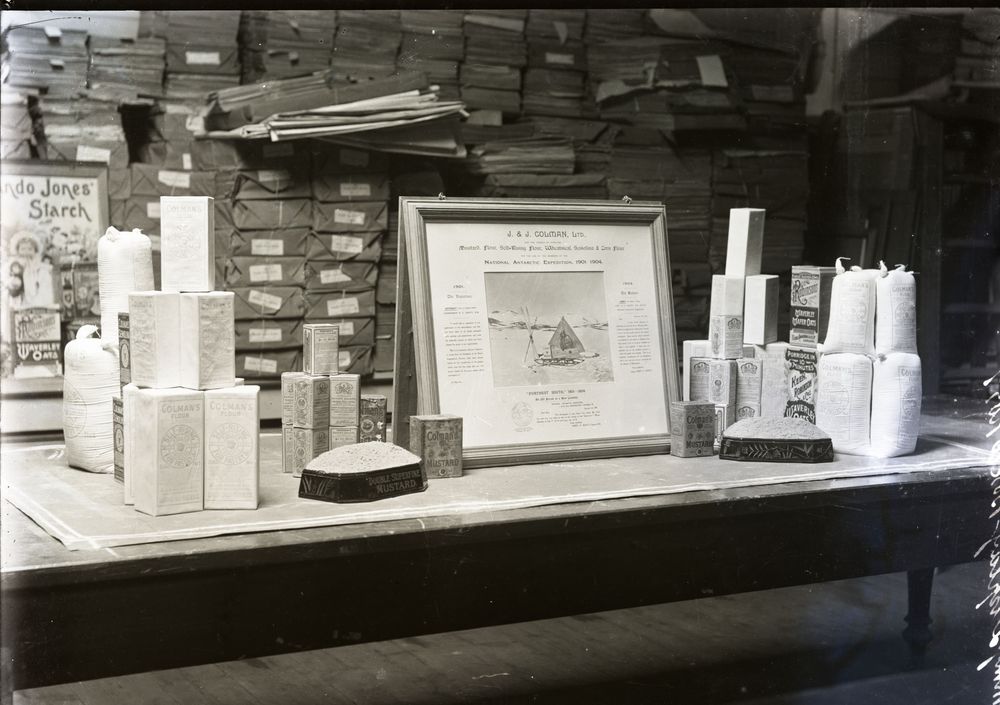Library photography collections: Capturing regional pride
Public libraries all over the country help tell the history of the communities they serve. One way they do this is through their photo collections.
As access to camera equipment widened through the 20th century so did the skill of amateur and professional photographers.
Their work, preserved and shared online by library authorities, opens the door to regional memories that might otherwise have been lost.
Library photo collections are increasingly being digitised, but you can also speak to library staff and ask to see physical photos in person.
Here we'll look at how three different library authorities have preserved photos that help tell stories about their communities.
The Colman family and the company's employees in 1882. Image courtesy of Norfolk County Council Library and Information Service at www.picture.norfolk.gov.uk
Preserving the Colman's legacy
When Robert Falcon Scott and Ernest Shackleton led pioneering expeditions to Antarctica in the early 20th century, Colman's mustard went with them.
Polar explorers needed more calories due to the effect of extreme cold on the body. This meant they needed a lot of food, but making large volumes of flavourful dishes was very challenging in the world's largest ice desert. That's where Colman's came in.
Mustard added heat and flavour to bland dishes, but Colman's—based in the city of Norwich—provided a lot more besides. The company was the preferred supplier of flour, semolina and other provisions that powered expedition teams in the harshest of environments.
By capturing photos of its involvement in groundbreaking adventures like these, Colman's demonstrated a savvy early understanding of the power of marketing.
Picture Norfolk, run by Norfolk Library and Information Service, is a photo archive that offers a great way to examine the history of the company and how it helped put Norwich on the map.
Unlike many companies of the Victorian era, we tend to think of Colman's as having been a considerate employer.
Owner Jeremiah James Colman set up a school for workers’ children decades before schooling became compulsory. He also provided low-cost housing, a nursery, a dispensary, education classes and even pubs for his workforce.
These moves were notable because they were established decades before widespread welfare services in Britain.
From Norwich to Antarctica



In this gallery you'll get an idea of the volume of food Colman's sent to Antarctica, and the effort required to transport it to the remotest part of the world.
This was an era now known as the Heroic Age of Antarctic Exploration.
The effort and endurance needed to reach Antarctica—and remain there for months—was considerable.
Several countries sent expedition teams to discover, map and research the vast continent. As with the fate of Scott and his team, not all explorers made it back home.
Rare views of Newcastle’s past
Laszlo Torday was a successful industrialist who moved to the Newcastle area from Hungary during the Second World War. He was a keen documenter of his environment, and Newcastle Libraries holds a collection of his photos that, today, offers rare views of the city as it was in the 1960s.
Where local people may have seen little worth photographing, as an immigrant—supposedly warned to leave Hungary personally by leading Nazi Ernst Röhm—Torday seems to have found inspiration in his new home.
His shots document shopping locations, markets, the shipyards of the region and more. Taken together, they offer a comprehensive snapshot of a specific time in the city’s history.
Photo from 'Torday's Newcastle' (Newcastle Libraries Flickr) Source: Newcastle City Library Photographic Collection
When Laszlo Torday’s photos were acquired by Newcastle Libraries, they came with a challenge: there was little contextual information available about the shots within the collection.
However, by uploading Torday’s photos to Flickr and inviting comments from the community, Newcastle Libraries was able to get confirmation about details relating to them. For example, people have left comments on photos that help identify street names, shops and in some cases people.
Do you recognise any of people or places in Torday’s photos? You can comment on them in Newcastle's Flickr album.
Manchester's one-man Streetview
Lawrence Kaye was a keen amateur photographer and member of the Manchester Amateur Photographic Society. As part of the Society’s efforts to record Manchester’s streets, Kaye was tasked with taking photos of various areas of the city. He did this at a time when the region’s industrial power was starting fade.
Years before Google Streetview, Kaye methodically went street-by-street to document many places and buildings that in a post-industrial era are now much changed.
His collection of thousands of local photos was bequeathed to the Archives and Local Studies Departments at Manchester Central Library, Middleton Library and Touchstones Rochdale.
Middleton Library, in Rochdale, used Kaye's photos in a particularly innovative way. Staff created a walking route and map, with Kaye’s photos, alongside those of others, used along the route to enable comparison between past and present.
Middleton Library's photographic walking trail, based on the photography of Lawrence Kaye. Source: Middleton Library Local Studies
Projects like Middleton Library’s show how old photos can be combined with modern technology to engage audiences decades after shots were taken.
In preserving photography from bygone times, libraries ensure that as technology develops there is a wealth of source material that can be used to tell stories for many years to come.
Books at the library about
pioneering photography
From the streets of northern England to Antarctica, these books feature photographers who immortalised communities and landscapes for the world to enjoy. Enjoy them for free at a library near you.

More library digital photo collections
Partners
Thank you to Newcastle City Libraries, Norfolk County Council Library and Information Service and Rochdale Libraries for sharing their materials and knowledge to help tell this story.




